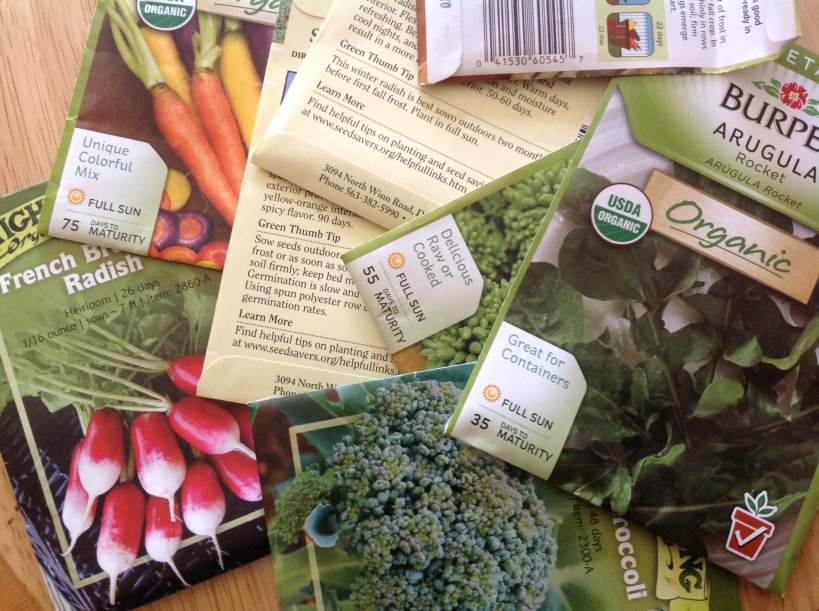
I don’t want to be the one to break the news, but we have about 55 days left until our average first frost hits the Twin Cities. Now before you get mad at me for mentioning frost, keep in mind that I’m actually trying to give you good news. That means it’s time to do some succession planting!
“What’s that?” you say. That is where you take places in your garden where you once had lettuce or radishes or peas… and now have holes and fill those holes with plants that will mature and be harvest-able in the 55 or so days. You’re looking for plants that prefer warmer soil temperatures for germination, but will also do well when they mature when the days are shorter and nights are cooler. Think fast growing warm season crops or longer growing cool season crops. You want the warm season crops to be wrapping up (beans, beets, etc.) and cool season crops to be beginning to peak, because cool season crops actually grow and taste better with a little cold snap (it brings the natural sugars out).
Below, I’ve listed plants that could be planted now for fall harvest and some that should wait a couple of weeks. You’ll notice I have some duplicates under different time frames. Why do I have radishes at 20 Days and at 50 days? Well, it depends on the radish. Check your seed packets for the “Days to Maturity” section, this number will tell you how many days it should take (on average) for your plant to go from seed to harvest. Also check for “Planting Tips”, “Green Thumb Tips”, etc. A lot of times they will provide the information you need on when to plant right on the seed packet. Take the French Breakfast Radish, for example, (which has 26 days to maturity) the packet notes that it germinates best when the soil temperature is 80 degrees, which is where our soil temperature in the Twin Cities is right now. Other packets will say “Best grown in cool weather.” Or “Warm days, cool nights.” All of these are flags telling us the best time to plant for optimal harvest. The trick is really to read the packet, determine what conditions they grow best in and then check the days to maturity to see if we have enough time to grow it.
Examples in order of days to maturity, meaning if you can’t get them all in the ground today, start planting those with the most days to maturity first, followed by those with the least days to maturity. You can also do a series of plantings with faster growing crops like radishes and arugula, then you’ll be able to harvest some about 3 weeks from now and some about 6 weeks from now, or plant a little each week for harvest 3, 4, 5 and 6 weeks out.
If you were to plant all of these today, you would have something to harvest every week starting 3 weeks from now, through fall.
20 Days: Beet Greens, Radishes
35 Days: Arugula
45 Days: Lettuce, Beets, Spinach, Broccoli Raab, Peas
50 Days: Beets, Beans, Red Malabar Spinach, Carrots, Radishes, Broccoli, Pickling Cucumbers
55 Days: Golden Beets, Broccoli Raab, Beans
55+ Days: Carrots
One more thing to keep in mind is that the average first frost is not necessarily the end of the gardening season (many crops will do well in cool weather) it’s just another tool to use to help us grow as much as we can in our gardens.
So, while the days are still warm and we still have nearly 2 months of summer weather, grab your seeds, get out there and fill those holes!
Happy succession planting!
Kate